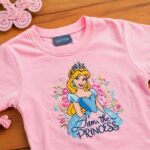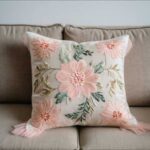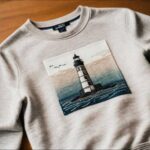Par for the Course
An Introduction to Golf Club Head Cover Embroidery
Introduction
Golf is more than a game, it’s a timeless pursuit that combines skill, strategy, and camaraderie on meticulously manicured fairways and greens. As golfers, we cherish every aspect of the sport, from the satisfying thwack of a well struck drive to the tranquil beauty of a sun kissed course stretching before us. Amidst this passion for the game, one often overlooked element stands out as a canvas for personal expression and creativity: golf club head covers.
Golf club head covers serve as guardians of our most prized possessions, our clubs, shielding them from the elements and preserving their pristine condition. But beyond their practical function, head covers offer a unique opportunity for golfers to infuse their equipment with personality and style. Whether adorned with vibrant colors, intricate designs, or personalized logos, head covers reflect the individuality and flair of each golfer, transforming a simple accessory into a statement piece on the course.
Purpose of Head Covers
The purpose of golf club head covers extends far beyond mere protection; they are emblematic of a golfer’s commitment to the game and an avenue for personal expression. At its core, the primary function of head covers is to safeguard the delicate club heads from the rigors of transportation, storage, and play.
When transporting golf clubs, whether in a vehicle, on a cart, or during air travel, head covers provide a crucial layer of defense against potential damage. Without covers, club heads are vulnerable to scratches, dents, and other forms of abrasion caused by contact with other clubs, surfaces, or objects. Even minor imperfections can impact the aerodynamics and performance of a club, affecting the trajectory and accuracy of shots.
Head covers play a vital role in protecting clubs from environmental factors such as moisture, dust, and debris. Whether it’s rain on the course, dust in storage, or sand on the driving range, these covers act as barriers, shielding club heads from elements that can corrode, erode, or otherwise compromise their structural integrity over time. By maintaining a clean and dry environment, head covers help preserve the appearance and functionality of clubs, ensuring that they perform optimally for years to come.
The significance of head covers transcends their utilitarian role. For many golfers, these accessories serve as canvases for self expression, allowing them to imbue their equipment with a touch of personality and style. Just as a golfer meticulously selects their clubs to suit their swing and preferences, the choice of head covers reflects individual tastes, interests, and even allegiances.
Some golfers opt for head covers adorned with vibrant colors and bold patterns that reflect their personality and flair. Others choose covers featuring logos of their favorite sports teams, universities, or brands, showcasing their affiliations and passions on the course. Custom designed head covers offer even greater opportunities for personalization, allowing golfers to showcase their creativity and individuality with bespoke designs tailored to their preferences.
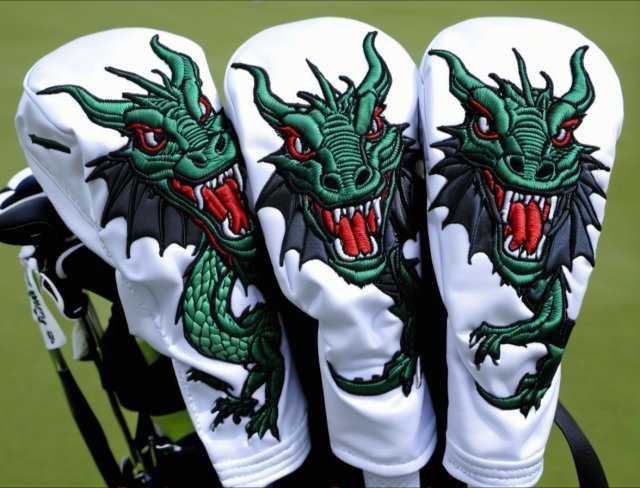
Moreover, head covers carry a sense of tradition and reverence within the golfing community. As custodians of their clubs, golfers take pride in preserving and protecting their equipment, honoring the craftsmanship and heritage that each club represents. By enveloping their clubs in covers when not in use, golfers pay homage to the sport’s rich history and demonstrate a commitment to its traditions.
In essence, the purpose of golf club head covers encompasses both practicality and symbolism. They are essential guardians of club heads, ensuring their longevity and performance, while also serving as vehicles for self expression and homage to the game’s traditions. From amateur enthusiasts to seasoned pros, golfers embrace head covers as indispensable companions on their journey across the fairways, embodying the spirit and ethos of the game with each swing.
Head Cover Materials
When it comes to golf club head covers, the choice of material is crucial, as it not only influences the protection offered to the club heads but also contributes to the overall aesthetics and durability of the covers.
1. Leather: Durable and luxurious, leather head covers are a timeless choice for golfers who value both style and functionality. Crafted from premium grade leather, these covers offer superior protection against scratches, dents, and other forms of damage, ensuring that club heads remain pristine during transport and storage. The natural suppleness of leather allows for a snug fit around club heads, providing a secure barrier against moisture and impact. Moreover, leather head covers exude a classic and sophisticated aesthetic, making them a favorite among traditionalists and discerning golfers who appreciate fine craftsmanship.
2. Neoprene: Known for its elasticity and water resistant properties, neoprene has emerged as a popular material for golf club head covers, particularly among golfers who frequently play in wet or humid conditions. Neoprene covers provide a snug and secure fit around club heads, effectively shielding them from moisture, dirt, and debris. Additionally, the stretchability of neoprene allows for easy installation and removal of covers, making them convenient for golfers on the go. With their lightweight and flexible design, neoprene head covers offer optimal protection without adding unnecessary bulk to golf bags.
3. Knit: Knit head covers, often crafted from acrylic or wool blends, evoke a sense of nostalgia and charm reminiscent of vintage golf attire. Lightweight and breathable, knit covers provide a cozy and snug fit around club heads, protecting them from scratches and minor impacts. While not as resistant to moisture as leather or neoprene, knit covers offer sufficient protection for casual golfers and fair weather players.
What sets knit head covers apart is their playful designs and customizable options, allowing golfers to express their personality and style with bold patterns, team logos, or custom embroidery. Perfect for adding a touch of whimsy to the golf bag, knit head covers are a favorite among collectors and enthusiasts alike.

4. Synthetic Fabrics: In addition to leather, neoprene, and knit, golf club head covers are also available in a variety of synthetic fabrics such as polyester and nylon. These materials offer a balance of durability, water resistance, and affordability, making them practical choices for golfers seeking reliable protection without breaking the bank. Synthetic fabric covers come in a range of styles and designs, from sleek and minimalist to vibrant and eye catching, catering to diverse tastes and preferences.
Ultimately, the choice of material for golf club head covers depends on individual preferences, playing conditions, and budget considerations. Whether opting for the timeless elegance of leather, the practicality of neoprene, the nostalgic charm of knit, or the versatility of synthetic fabrics, golfers can find head covers that not only protect their clubs but also reflect their personality and style on the course.
Zipper vs Velcro vs Slip-On
When selecting golf club head covers, one important consideration is the closure mechanism, which can significantly impact ease of use, security, and overall functionality. Each type of closure—zipper, Velcro, and slip-on offers distinct advantages and considerations for golfers.
1. Zipper:
Zippered head covers feature a zipper closure along one side or edge, providing a secure and reliable seal for club heads. The zipper mechanism allows for easy access to clubs while ensuring that they remain securely covered during transport and storage. With a quick zip and unzip motion, golfers can effortlessly remove and replace head covers without fuss or hassle.
Zippered covers offer a snug fit around club heads, preventing them from slipping off or becoming dislodged during movement. Additionally, the closed design of zipper covers provides enhanced protection against moisture, dust, and debris, keeping clubs clean and dry between uses. Overall, zipper head covers are favored by many golfers for their convenience, security, and peace of mind on the course.
2. Velcro:
Velcro closures offer versatility and adjustability, allowing golfers to customize the fit of their head covers to accommodate different club sizes and shapes. Consisting of two interlocking fabric strips—one with tiny hooks and the other with loops—Velcro closures provide a strong and secure grip when pressed together.
This hook and loop fastening system ensures that head covers stay firmly in place during transportation and storage, minimizing the risk of slippage or loss. Velcro covers are easy to open and close, making them ideal for golfers who value simplicity and flexibility. Additionally, Velcro closures are less prone to wear and tear compared to zippers, as they do not have moving parts that can break or malfunction over time.
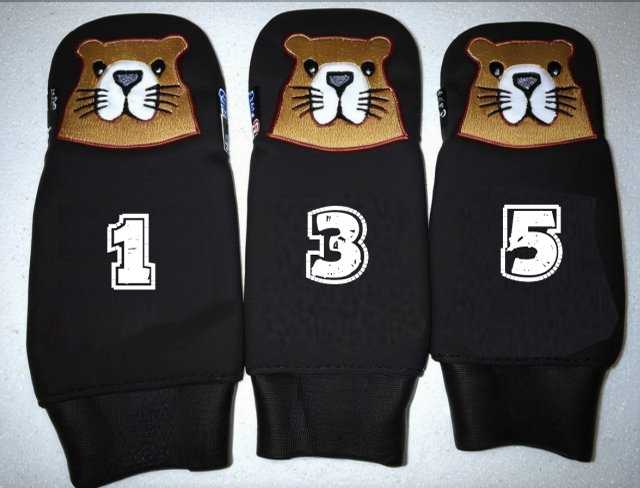
With their adjustable fit and durable construction, Velcro head covers offer a practical solution for golfers seeking reliable protection with added versatility.
3. Slip-On:
Slip-on head covers feature a stretchy opening that allows them to slide effortlessly over club heads without any fasteners or closures. This slip-on design offers a seamless and streamlined appearance, minimizing bulk and clutter in golf bags. Slip-on covers are quick and easy to put on and take off, making them ideal for golfers who prefer a minimalist approach or frequently switch clubs during play.
While slip-on covers may not provide as secure a fit as zipper or Velcro closures, they still offer sufficient protection against scratches, dents, and other forms of damage. Additionally, the absence of fasteners eliminates the risk of snagging or catching on other objects in the golf bag, reducing wear and tear on both the covers and clubs. With their simplicity and convenience, slip-on head covers are a popular choice for golfers seeking uncomplicated yet effective club protection.
Ultimately, the choice between zipper, Velcro, and slip-on head covers depends on individual preferences, priorities, and playing habits. Whether prioritizing security, versatility, or simplicity, golfers can find head covers that suit their needs and enhance their overall golfing experience on the course.
Choosing the Right Image, Logo, or Design
When it comes to customizing golf club head covers with embroidery, selecting the right image, logo, or design is essential to creating a personalized and visually appealing accessory. Here are some considerations to keep in mind when choosing the perfect design for your head covers:
1. Personalization:
One of the most significant advantages of custom embroidery is the ability to personalize your head covers to reflect your personality, interests, and style. Consider incorporating elements that hold personal significance, such as your initials, a favorite quote, a symbol of your hobbies or passions, or even a commemorative emblem representing a significant achievement or milestone. By infusing your head covers with personal touches, you can create a unique and meaningful accessory that truly reflects who you are as a golfer.
2. Visibility:
When selecting a design for your head covers, it’s essential to choose something that is easily recognizable and visible from a distance. Bold graphics, clear outlines, and high contrast colors can help ensure that your head covers stand out on the course, making it easier to identify your clubs at a glance. Whether opting for a striking logo, a distinctive pattern, or a vibrant color scheme, prioritize visibility to ensure that your head covers make a statement both on and off the course.
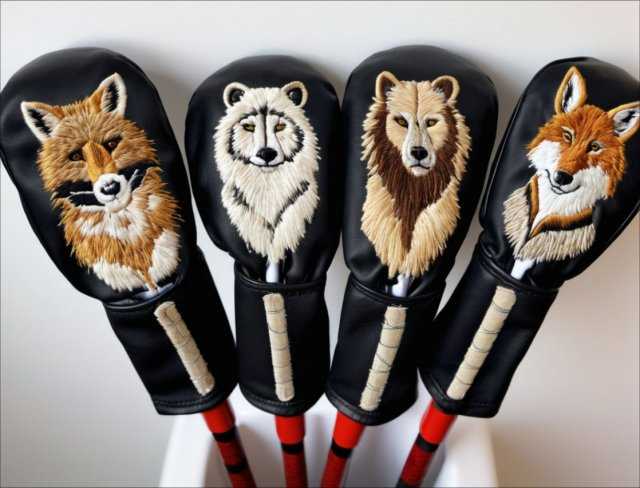
3. Relevance:
Consider the context in which your head covers will be used and choose a design that aligns with the overall theme or aesthetic of your golfing experience. Whether you’re a member of a specific golf club, a fan of a particular sports team, or simply drawn to a specific style or motif, selecting a design that resonates with you can enhance the cohesiveness and visual appeal of your head covers. Additionally, choosing a design that reflects the spirit of the game of golf can add an extra layer of significance and relevance to your accessories.
4. Durability:
Opt for high quality embroidery that is built to last, ensuring that your design remains vibrant and intact over time. Choose thread colors that complement the material and background of your head covers, and prioritize tight, secure stitching to prevent fraying or unraveling. Additionally, consider the durability of the embroidery itself, selecting designs that are resistant to fading, peeling, or other forms of wear and tear. By investing in durable embroidery, you can enjoy your custom head covers for years to come, knowing that they will maintain their visual appeal and functionality through countless rounds of golf.
5. Customization Options:
Explore the various customization options available for your head covers, including monograms, logos, patterns, and text. Many embroidery services offer a range of fonts, styles, and sizes to choose from, allowing you to create a design that perfectly suits your preferences and specifications. Additionally, consider adding embellishments or accents such as rhinestones, sequins, or metallic thread to enhance the visual impact of your design and add a touch of glamour to your head covers.
By carefully considering these factors and selecting a design that resonates with you, you can create custom embroidered head covers that not only protect your clubs but also showcase your personality and style on the course. Whether opting for a classic monogram, a bold logo, or a whimsical pattern, your head covers are sure to make a statement and elevate your golfing experience to new heights.
Embroidery Techniques and Tips
Embroidering golf club head covers requires skill, precision, and attention to detail to achieve professional looking results. Whether you’re embellishing a single cover or a set of matching covers, here are some techniques and tips to enhance your embroidery:
1. Digitization:
Digitizing your design is a crucial step in the embroidery process. This involves converting your chosen design into a digital embroidery file that can be read by computerized machines. A professional digitizer can optimize your design for embroidery, adjusting stitch types, densities, and thread colors to ensure the best results. Complex designs may require more stitches and colors, while simpler designs may need fewer. Additionally, consider the size and placement of your design on the head cover to ensure it fits properly and looks visually appealing.
2. Hooping:
Proper hooping is essential for achieving consistent embroidery results. When hooping the fabric, ensure it is stretched taut and flat within the hoop to prevent puckering or distortion during stitching. Position the hoop so that the design is centered and aligned correctly with the fabric. Experiment with different hooping techniques, such as floating or basting, to accommodate thick or bulky materials and ensure optimal results.
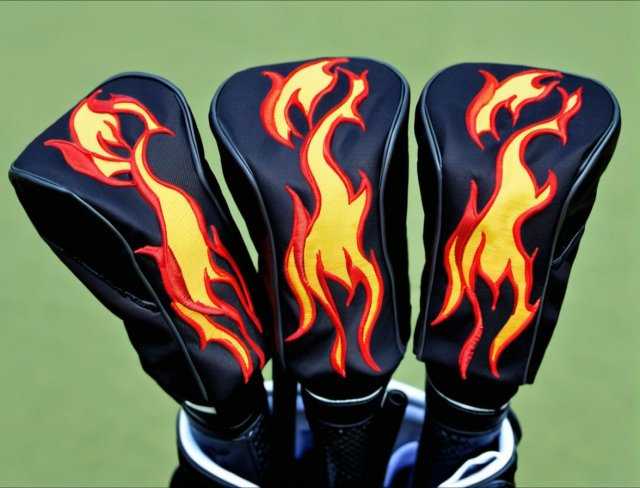
3. Thread Selection:
Choosing the right thread is key to achieving vibrant and long lasting embroidery. Consider factors such as thread weight, colorfastness, and durability when selecting thread for your project. Polyester and rayon threads are popular choices for their strength, sheen, and wide range of colors. Metallic threads can add a touch of glamour to your embroidery but may require special handling to prevent breakage or fraying. Test different thread types and colors on scrap fabric to ensure they complement your design and fabric.
4. Thread Tension:
Proper thread tension is essential for producing clean and uniform stitches. Adjust the tension of your embroidery machine according to the thickness of the fabric and the density of the design. Too much tension can cause puckering or thread breakage, while too little tension can result in loose or uneven stitches. Monitor the tension throughout the embroidery process and make adjustments as needed to maintain consistent stitching.
5. Stabilization:
Stabilizers provide support for the fabric during embroidery, preventing stretching, shifting, or distortion. Choose a stabilizer appropriate for your fabric and design complexity, such as tear away, cut away, or water soluble stabilizers. Hoop the stabilizer along with the fabric to ensure it remains securely in place during stitching. After embroidery is complete, remove any excess stabilizer carefully to avoid damaging the stitches or fabric.
6. Embroidery Placement:
Consider the placement of your embroidery design on the head cover to ensure it is visible and balanced. Avoid placing the design too close to seams, edges, or other embellishments that may interfere with stitching. Center the design within the hoop and adjust the placement as needed to achieve the desired look. Experiment with different placement options to find the most flattering and visually appealing position for your embroidery.
7. Finishing Touches:
After embroidery is complete, trim any loose threads and inspect the stitching for quality. Use small, sharp scissors to carefully snip away excess thread, taking care not to cut into the fabric or embroidery. Press the embroidered head cover with a warm iron to smooth out any wrinkles and ensure a polished finish. Consider adding additional embellishments or accents, such as rhinestones or beads, to enhance the visual impact of your design and add a touch of personality to your head covers.
By following these embroidery techniques and tips, you can create custom head covers that are not only functional and durable but also beautifully crafted and visually stunning. Whether you’re a seasoned embroiderer or a novice enthusiast, these guidelines will help you achieve professional looking results and elevate your golfing experience with personalized accessories that reflect your unique style and personality.
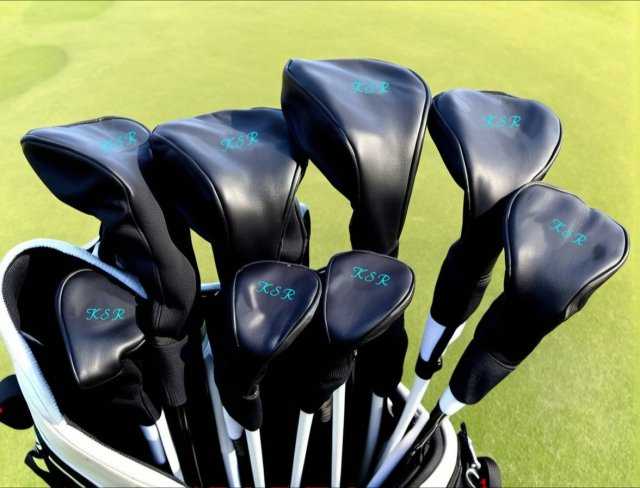
Conclusion
Golf club head cover embroidery is more than just a practical necessity—it’s a canvas for creativity and self expression on the course. By customizing your head covers with personalized designs, you can add a touch of style and individuality to your golfing experience, making a statement from tee to green. Whether you opt for classic elegance, vibrant flair, or whimsical charm, there’s a design and technique to suit every golfer’s taste.
As you embark on your journey across the fairways, your custom embroidered head covers serve as symbols of your passion for the game and reflections of your unique personality. From the meticulously digitized designs to the precision stitching and careful placement, each detail speaks to the dedication and craftsmanship that goes into creating these bespoke accessories. With every swing, your head covers not only protect your clubs but also showcase your identity as a golfer, leaving a lasting impression on fellow players and spectators alike.
So, embrace the art of golf club head cover embroidery and unleash your creativity on the course. Whether you’re teeing off at dawn or sinking the final putt at dusk, let your head covers tell the story of your golfing journey—a story of skill, style, and the unwavering passion that drives you to excel with every shot. With custom embroidered head covers by your side, you’re not just playing the game; you’re making a statement, one stitch at a time.
Now that you have read through this article, feel free to SHOP for products we have created. If you are looking for something special which isn’t in our store, feel free to contact us.



